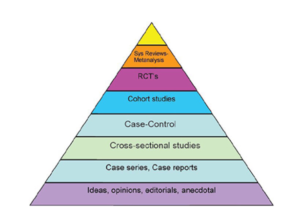Ali is a 36 year old diabetic patient who was diagnosed a year ago. He has been prescribed anti diabetic medications called glibenclamide by a doctor working in the private sector. In view of the ever rising cost of living, Ali decided to transfer to a government health clinic for his medication.
After registering for the diabetes clinic, the seemingly young doctor prescribed a different type of medication compared to the one he previously obtained from the private clinic. Stunned by this switch, Ali questioned the young doctor in an angry tone.
Patiently, the young doctor explains that the new medication is suitable for Ali because of his big size and his uncontrolled eating habits. This is the first time that Ali hears of Body Mass Index (BMI).
Ali feels uneasy. He returns home and takes the medication prescribed. He goes online and uses a well known search engine. He types in “diabetes and latest medication”. In an instant, hundreds of links appear in front of his eyes.
From the 25000 hits, an article entitled “70 from 100 diabetes patients on metformin become fatter after 6 months on medication” caught his eye. After reading that journal he was convinced that the young doctor from the government clinic had prescribed the wrong medication that will probably put his health at risk. He printed the article and decided no to go for his follow up. “Young doctors! What do they know!” he thought to himself.
Too much information can be confusing for anyone. All articles need to be read with caution, even if the article comes from a journal. Especially if it comes from a dubious one.
Every scientific discovery in medicine requires guarded interpretation from the reader. Does the study include a representative sample size? Is the recommended medication given appropriate? Are adverse effects reported? Who is the sponsor of the study- is there a conflict of interest ? Factors such as sample size, inclusion criteria, research methodology, intervention and normal controls, study duration, and definitions used- all affect the interpretation of the academic reader.
That is why, results from a single study cannot be used as irrefutable evidence. Many factors can affect study results. We may agree or disagree with the study results. If the information is important it cannot be discarded. The flaws and weaknesses of the study have to be dissected and corrected in the following studies.
Another study can be conducted using new methodology, a different sample, better statistical analysis and so forth. All this is to improve the research methodology that is hoped will lead to better results.
The conducted study has its own framework. The type of framework chosen will dictate the quality of the end results. Refer to the pyramid depicting study weightage. At the very bottom, are the observational studies and opinions or testimonies. As we go higher up the pyramid, the study framework becomes more complex and the quality of the results improve. The complexity of the study improves when more bias is controlled and avoided by the study.

The medical world is constantly conducting studies in order to benefit humanity. Putting their God given talent to good use in order to help others. In the space of merely a year, over 30 000 studies are published. Is it fair to take only one research to support our personal belief when in fact 95% of studies do not support it ?
Therefore there is a standardized evaluation system to assess each study for publication. This is the function of a systemic review. All related studies that answer a specific question are collected, screened, and studied. As an example, medical science may question whether or not Vitamin C supplementation can reduce the duration of a throat infection, Hundreds of studies, or even thousands of studies are screened in order to elucidate firm evidence that can hopefully answer that query. All the results of these studies are analyzed statistically and the end result is a huge study comprised of many smaller studies. Logically, the result from this systemic review is more important and valid compared to a single study
The medical community is continuingly making an effort to collect and reassess study results in order to make a comprehensive conclusion. This conclusion will later affect the treatment plan and choices of doctors attending to their patients. In instances where the treatment options are not clear cut, all available information should be discussed with the patient. The results from these studies will help the patient and doctor reach a decision that satisfies both parties.
Hopefully the public understands the ever evolving and growing nature of medical knowledge. Each day, numerous new studies with differing levels of quality are published that simply add to the vast expanse of knowledge. However, reading the results of the studies has to be done with a high degree of caution.
Dr Helmy Hazami is a Public Health specialist majoring in Epidemiology and Biostatistics. He is currently working in his home town of Kuching as a medical lecturer. For more information, kindly visit “The Team” tab. This article was translated from https://www.mmgazette.com/berhati-hati-ketika-membaca-jurnal-dr-helmy-hazmi/ by Dr Hidayatul Radziah Ismawi.
[This article belongs to The Malaysian Medical Gazette. Any republication (online or offline) without written permission from The Malaysian Medical Gazette is prohibited.]
